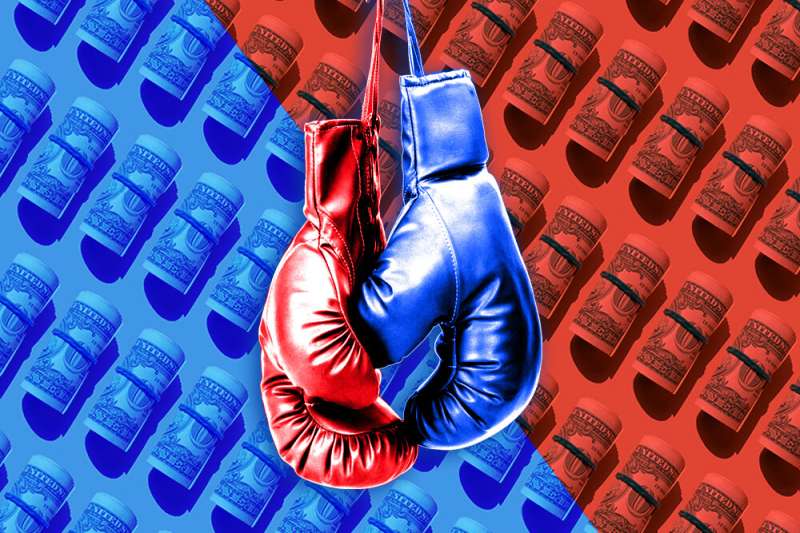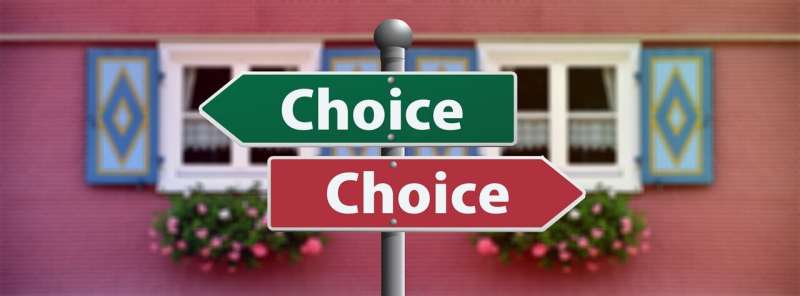
by Chris Melore
ROCHESTER, N.Y. — The battle between Republicans and Democrats typically gets most of the blame for anything that goes wrong in American society today. Although politics may be more polarizing than ever before, a new study finds when the two major parties are in close competition with each other, the American people benefit the most.
Researchers Gerald Gamm, from the University of Rochester, and Thad Kousser of UC San Diego say states that see tight competition between Democrats and Republicans for political control often end up passing measures which improve the quality of life for the people living there. Their study looked at the history of the two-party system from 1880 to 2010 and discovered two main trends.
The first is that there appears to be a link between party competition and increased spending on human capital and infrastructure. The second is that this spending often leads to improvements in the public’s welfare. These links include the political balance in Congress, state legislatures, urban politics, and modern party politics.
“Competition between parties is not just healthy for a political system but for the life prospects of the population,” says Gamm in a university release.
Living in a ‘red state’ or ‘blue state’ is bad for your health
For staunch Democrats, liberals, Republicans, and conservatives, living in a deep “blue” or “red” state may seem better for their well-being — and lead to less arguments too! However, the study finds states where one party typically has overwhelming control (such as New York, California, or Texas) actually do a worse job of providing a good life for its residents.
Researchers say residents in deep blue or red states have a lower life expectancy, lower levels of education, and less income in comparison to so-called “swing states.” Heavy Democrat and Republican states also saw a higher rate of infant mortality throughout the years.
“We find that states that spend more—and spend more because of party competition—become places where children are more likely to survive infancy, where they learn to read and where they graduate from high school, where adults live longer lives, and, at least in the pre-New Deal era, where people earn higher incomes,” says Kousser.
One-party rule leads to poor policies
So, what’s causing this downturn in social well-being in certain states? The study finds that when one party holds too much power and holds it for too long, politicians end up pushing through more “pork-barrel” projects which only benefit a small number of residents in an area.
Conversely, when the two parties regularly battle for control, those in power find ways to improve the reputation of their party by pursuing statewide programs that help many people. Researchers add that both Democrats and Republicans get the chance to show the public how they differ from their political opponents.
“Party competition creates bonds between copartisans from across the state and between the executive and legislative branches, leading both parties to work for programs that benefit a broad set of constituents,” the team says.
Is modern political polarization changing this?
“In the contemporary environment, we recognize that the historic importance of party competition may be attenuated, negated, or even reversed,” the team writes.
Gamm notes that in the past, voters and elites likely agreed on many political policies. Now, however, the researcher says politics is becoming a “zero-sum game,” with both parties completely opposed to the other’s philosophy. With that in mind, the team says it’s hard to know if this trend will continue in the post-2010 era of politics.
“What we show here, drawing on a full century of data on party competition and spending, as well as data on health, literacy, and prosperity through 2010, is the central importance of two-party competition to the rise of the American state and the flourishing of the American people,” the study authors conclude.
The study is published in the journal American Political Science Review.
Are political parties getting in the way of our health?

Today, the two major political parties are often blamed for a plethora of problems in American governance. But for most of the last century and a half, political party competition has had positive effects on the welfare of Americans.
That's according to new research by Gerald Gamm, a professor of political science and history at the University of Rochester, and Thad Kousser, a political science professor at the University of California, San Diego.
The pair conducted a historical analysis spanning all 50 states for the period 1880–2010. In the study—"Life, Literacy, and the Pursuit of Prosperity: Party Competition and Policy Outcomes in 50 States," published in the American Political Science Review—they present two related findings:
- A direct link between party competition and increased spending on human capital and infrastructure
- A direct link between this spending and measurable improvements in public welfare
"Competition between parties is not just healthy for a political system but for the life prospects of the population," says Gamm, whose research focuses on Congress, state legislatures, urban politics, and modern party politics.
How does party competition lead to better social outcomes?
The data show that states in which the same party won most elections and held an overwhelming majority of seats in the state legislature were likely to have populations with lower life expectancy, levels of education, and income—coupled with higher infant mortality. But as soon as competition among parties within a state increased and a second party started winning seats and more elections, state spending on infrastructure and human capital went up—and with it, literacy, earnings, and longevity.
"We find that states that spend more—and spend more because of party competition—become places where children are more likely to survive infancy, where they learn to read and where they graduate from high school, where adults live longer lives, and at least in the pre-New Deal era, where people earn higher incomes," says Kousser, an expert on term limits, governors, and state politics.
How do the researchers explain the data?
According to Gamm and Kousser, when one party holds overwhelming power, it tends to divide into factions. Moreover, legislators have an incentive to push for pork-barrel projects that narrowly target groups of constituents.
By contrast, when two parties closely compete for control of a statehouse, lawmakers find they can improve their individual reputations by helping their parties pursue a statewide program. Democrats have an incentive to show how they differ from Republicans and vice versa. Demonstrating what their party stands for, not through district bills or pork-barrel spending but through statewide policy making, provides a route to electoral success.
In turn, the authors write, "Party competition creates bonds between copartisans from across the state and between the executive and legislative branches, leading both parties to work for programs that benefit a broad set of constituents."
Do the findings still hold true today as political polarization has dramatically increased?
That question has, indeed, hovered over their latest work. Arguably, American politics began changing profoundly in the 1980s. Gamm notes that the last four decades have been a time of "unremitting and closely fought party competition in national politics, new social and cultural cleavages, historically high levels of partisan polarization, a collapse in mediating institutions, shifting norms and rules in Congress, geographic sorting, and the growth of social media." Whereas in the past, voters and elites alike agreed on many policy goals, politics nowadays has increasingly become a zero-sum game, with the two major parties in fundamental conflict on most important issues.
"In the contemporary environment, we recognize that the historic importance of party competition may be attenuated, negated, or even reversed," the team writes. They caution that the rise of the Democratic Party in this era as a distinctively liberal party may also mean that the party in control matters more now than it did in the past.
With often a lag of decades between cause and effect, Gamm and Kousser posit that readers in a generation or two may conclude that party competition—a "hallmark of American politics since the days of Madison, Hamilton, and Jackson and perhaps the nation's greatest contribution to modern democracy"—ceased to be beneficial in the 1980s. But it's too early to know whether the contemporary shift toward party polarization will prove permanent.
That means our generation can't (yet) render the verdict.
"What we show here," they conclude, "drawing on a full century of data on party competition and spending, as well as data on health, literacy, and prosperity through 2010, is the central importance of two-party competition to the rise of the American state and the flourishing of the American people."'Affective polarization' increasingly leaks into social situations, says new study
More information: Gerald Gamm et al, Life, Literacy, and the Pursuit of Prosperity: Party Competition and Policy Outcomes in 50 States, American Political Science Review (2021). DOI: 10.1017/S0003055421000617
Journal information: American Political Science Review
Provided by University of Rochester
Polarization, diversity, and democratic robustness

Polarization is dangerous for democracy. Though the U.S. Constitution was designed to harness rivalry with a diverse, redundant, and modular set of institutions, if that rivalry curdles into the belief that your competitors are your enemies, those institutions may not be strong enough to hold a nation together.
In a Perspective piece in the Proceedings of the National Academy of Sciences, SFI External Professor Jenna Bednar (University of Michigan) argues that polarization poses three perils in particular.
The first problem is that people tend to gather with those who think similarly and avoid those who think differently, accentuating a distaste for those who differ. Second, elites can manipulate the public through fear, persuading their followers that others pose an existential threat—and then that fear can feed on itself, beyond all control. And third—and most dangerous, Bednar argues—is that the positions of the population become simplified, with less room for individual variation in beliefs. This can happen, for example, when each group polices the beliefs of its members and punishes those who don't conform with the established party line. This creates a loss of diversity in opinions that imperils democracy just as species diversity loss imperils ecosystems.
Preventing extreme polarization of political attitudes
More information: Jenna Bednar, Polarization, diversity, and democratic robustness, Proceedings of the National Academy of Sciences (2021). DOI: 10.1073/pnas.2113843118
Journal information: Proceedings of the National Academy of Sciences
Provided by Santa Fe Institute
The emergence and perils of polarization

We can't understand polarization unless we analyze it as a complex system, argue SFI External Professor Scott Page (University of Michigan) and co-author Delia Baldassarri in a commentary for a special feature on the dynamics of political polarization in the Proceedings of the National Academy of Sciences.
Polarization occurs both in ideology (beliefs about the world and appropriate policies) and emotion (distrust and disconnection between the groups), and it is the feedback loops between these two types of polarization that make it such a difficult problem to solve. Positive feedback loops—where divergence creates more divergence—build polarization in the first place; negative feedback loops stifle attempts to build bridges across groups.
Different models of polarization highlighted in the special feature shed light on particular aspects driving it. One model assumes that people become more like those who agree and diverge from those who disagree. That simple force transforms an ordinary array of varying opinions into two camps. A second model highlights the role that technology plays in enabling this movement, making it easier to link with those with similar views and to avoid those who disagree. And a third views polarization as a result of the overwhelming complexity and multidimensionality of the issues voters face: Incapable of deciding issue by issue, citizens look to elites and political leaders to simplify, and party leaders have incentives to build loyal, ideologically clustered networks of supporters.
Getting out of our polarized state, which according to some models will demand more effort than was required to get into it, will hinge on a deep understanding of the multiple forces that got us where we are now. The different theoretical explanations these models provide offer a start on that.
Preventing extreme polarization of political attitudes
More information: Delia Baldassarri et al, The emergence and perils of polarization, Proceedings of the National Academy of Sciences (2021). DOI: 10.1073/pnas.2116863118
Journal information: Proceedings of the National Academy of Sciences
Provided by Santa Fe Institute
No comments:
Post a Comment